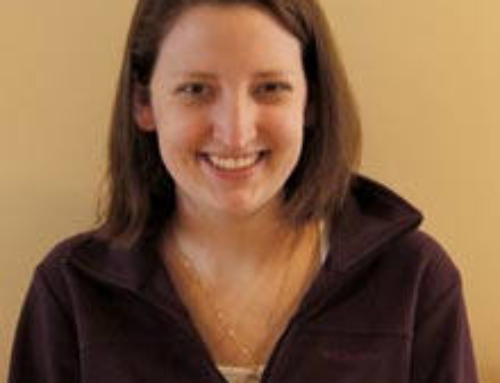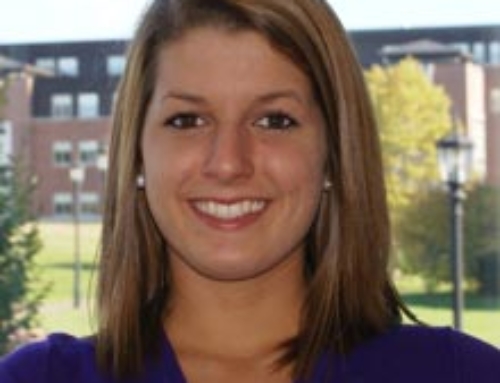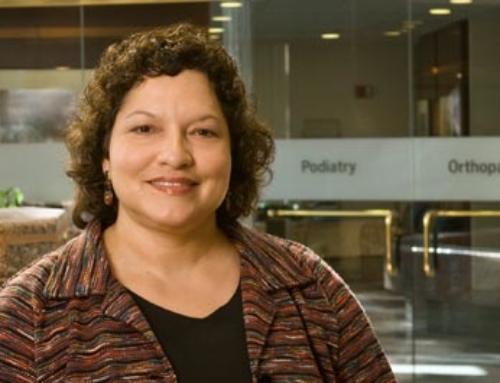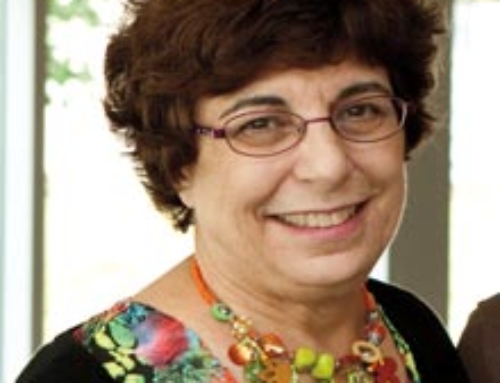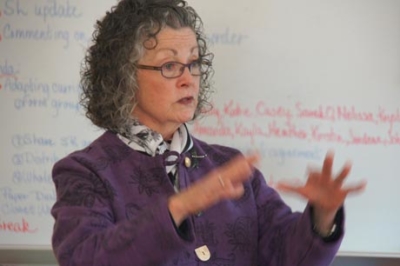 Educating teachers and the birth of Saint Joseph’s College go hand in hand. When young women at St. Joseph’s Academy in Portland graduated from their Sisters of Mercy-run high school, some wanted to become teachers. According to reported history, they asked the Mother Superior about ways to pursue their studies within a Catholic setting, and she replied by starting a two-year program to prepare teachers (which quickly grew into a four-year degree program). The year was 1912.
Educating teachers and the birth of Saint Joseph’s College go hand in hand. When young women at St. Joseph’s Academy in Portland graduated from their Sisters of Mercy-run high school, some wanted to become teachers. According to reported history, they asked the Mother Superior about ways to pursue their studies within a Catholic setting, and she replied by starting a two-year program to prepare teachers (which quickly grew into a four-year degree program). The year was 1912.
In the 100 years since Saint Joseph’s began teaching teachers, educational theories have evolved, grading has become more complex (hello, rubric), standards-based learning has continued its ascent, and testing has reigned supreme since the federal No Child Left Behind legislation passed in 2001.
What hasn’t changed is this: “We’re a smaller school, with an element of essential charity. We mold and mentor, and we’re there for our students,” says education department chairwoman Dr. Kathleen Clements. Education professor Dr. Karen Lemke agrees. “The support role through the years has been unflappable,” she states.
Education is part of the college’s Catholic roots. The founder of the Sisters of Mercy, Catherine McAuley, started the order 180 years ago in Ireland to educate and care for poor women in Dublin who faced dire circumstances. When the nuns expanded to America, the Sisters of Mercy formed schools, colleges and hospitals throughout the nation to carry on her legacy.
How teaching has changed
In the span of the last century, many educational trends and practices have waxed and often waned. Open classrooms and cooperative learning in the ’70s, lesson plans in the ’80s, and research-based teaching in the ’90s have all come to the forefront at one time or another. Throughout much of this time span, teachers operated much more independently than in today’s classroom, where the content they teach is largely prescribed.
“Now you must teach 90 minutes of this and 90 minutes of that. You can’t mix the formula to match class dynamics on a given day,” says Clements.
Teachers used to be the “sage on stage,” education professor Dr. June Marshall notes. Now you might find a teacher working with a small group at a table or even one-on-one as other students work on the same project on their own. In essence, students are expected and encouraged to get more involved in their own education than before, representing a huge change in the profession.
Teachers are also much more sensitive to individual needs today. “It’s no longer that we’re teaching and hope they learn it. Now we have to demonstrate that they did,” says Clements. In addition, the profession as a whole has incorporated a great deal more inquiry-based reflection as a practice where teachers assess their own effectiveness in helping children learn.
Probably the biggest change in teaching over the last century resulted from No Child Left Behind (NCLB), which requires states to assess basic skills for all students in certain grades in order to receive federal funding. As NCLB’s emphasis on reading and math in elementary education took center stage, instruction in geography, social studies and science began to take a back seat.
According to education faculty members, NCLB focuses on urban areas in the way it calculates suitable educational progress. More rural states like Maine, they say, don’t continue to show progress because those states may already be doing well. They also say the legislation maligned teachers by labeling some who had taught for 30 years as non-qualified in a subject area and requiring them to take additional coursework.
“We should be held accountable, but you can’t diminish the effects of NCLB on the overall educational problem,” says Clements. “Teachers have expertise with instructional strategies and methodology. The focus on assessment has diminished what teachers know they should be doing for best practice.”
Dr. Lemke has her students study Finland’s educational system, which is more developmentally based and yields the highest test scores in the world. “They think we’re test crazy, and we are,” she says. “We’ve fallen prey to the politicians,” agrees Clements.
As educational theories and laws have changed, technology in the classroom has blossomed. “Technology has transitioned from an extra to a necessity in order to meet the expansive amount of knowledge available and to meet the needs of a diverse learning population,” says education professor Dr. Janice Rey.
The St. Joe’s curriculum format itself has changed as well. “The standard used to be you only did senior year student teaching, but in 1997 we began junior internships and in 2002, we began a sophomore practicum,” says faculty member Marshall. “Students now learn about the classroom earlier and in a more consistent way,” she adds.
While the Saint Joseph’s undergraduate education program on campus has adapted and remained strong, in 1999 the college began an online M.S. in Education degree for older adults who were already working professionals. William Ridge of South Portland, Maine, who teaches social studies to 6th, 7th and 8th graders at Holy Cross School, is one of them. A graduate of Mercy and Jesuit education through high school, he came to teaching after retiring as a police officer and administrator with the Portland Police Department. He is now in his fourth year teaching at Holy Cross and will finish his master’s degree in time for this year’s May commencement.
He says the practical nature of his coursework made it a much more positive and smooth transition for him in switching careers, teaching him about presenting material in a variety of ways and evaluating a method’s effectiveness for the learner. He especially likes both the flexibility of the program’s pace (he sets his own within certain time parameters) and the help from his academic advisor in answering all of his questions quickly and thoroughly. “She is gold,” he says.
In the last five years, the online master’s in education has grown 45 percent. The average age of the online students hovers around 40 years old.
“When they read curriculum materials now, it means something different because they’ve experienced it,” says education program director Dr. Tom Hancock. The degree has concentrations in school educator, school leadership, Catholic school leadership, adult education and training, and health care educator.
Some Saint Joseph’s alumni like Danielle Johnson ’10 go right from the on-campus education program to the online master’s degree. She is a second grade teacher at the Songo Locks school in Naples, Maine.
Johnson’s name went up on Dr. Clements’ door right after she was hired at Songo Locks. “We know our students really well, and we all feel a part of their success,” Clements says of her pride in posting Johnson’s name and new position on her door.
How teaching has not changed
Although No Child Left Behind and the role of technology have altered teaching immensely, they have not changed the importance of the student-teacher dynamic in the classroom. “Good teachers know that learning only takes place when there is a relationship,” says education professor Janice Rey. “No matter what happens in terms of policy and procedures, when you see those sets of eyes, it doesn’t matter what happens outside,” adds Clements. “Teachers want to be there helping kids.”
Marshall says her best moments as a college teacher are when her graduates come back and say, “‘You were right on the money. I needed to learn that and you pushed me to learn it.’ It’s an awesome experience to see a graduate do well.”
Clements sums up why teachers ultimately do what they do: “Without education, there’s no hope for anyone. It’s power; it lets you make changes, open doors and solve problems.”
Catherine McAuley would agree.
